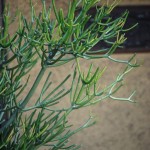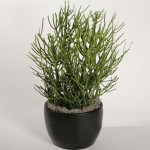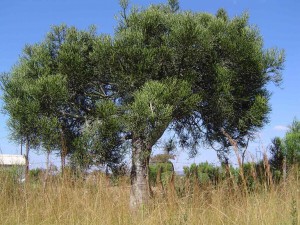Family: Euphorbiaceae
Synonymous: Tithymalus tirucalli
Tirucalia indica
Euphorbia viminalis
Euphorbia geayi
Euphorbia laro
Euphorbia media
Euphorbia rhipsalioides
Euphorbia scoparia
Euphorbia suareziana
Arthrothamnus tirucalli
Distribution and habitat: Euphorbia tirucalli is a shrub that grows in semi-arid tropical climates.
It has a wide distribution in Africa, being prominently present in northeastern, central and southern Africa. It may also be native in other parts of the continent as well as some surrounding islands and the Arabian peninsula and has been introduced to many other tropical regions. It grows in dry areas and is often used to feed cattle or as hedging. Euphorbia tirucalli has the ability to grow on land that is not suitable for most other crops.
Euphorbia tirucalli has unmistakable, brush-like branch masses that are a noticeable feature of the plant. It also occurs over the widest distribution of all local euphorbias and is also a very variable plant ranging from many-branched shrubs to large trees, depending on the particular habitat. Euphorbia tirucalli occurs in various habitats ranging from grassy hills, rocky outcrops and ridges, along river courses, bushveld and open savanna. Dense thickets are associated with this species and the plant itself may form hedge-like barriers in the veld.
Description: Euphorbia tirucalli can grow 9m (30 feet) tall in the wild, but the indoor plant rarely exceeds 1.5-2m (5-6 feet). When the plant is young, the many-branched stems carry minute leaves, but these soon disappears, leaving the stems smooth, cylindrical, glossy green and pencil-thick. Most of them stand upright, producing branches by forking into two equal-size sections at frequent intervals.
Houseplant care: Euphorbia tirucalli have a rangy, open growth habit and are more valued for their novelty than the sheer beauty of their foliage.
Euphorbia tirucalli can be trimmed back if they become too large, but always wear protective clothing to prevent irritation from the sap. As with all succulents, it is better to let it dry out rather than risk too much moisture and the ensuing rot.
Light:Euphorbia tirucalli need full sunlight all year long. It is perfect for a sunny window.
Temperature: These plants prefers average summer temperatures 18-21C (65 -70F). In winter, cool to 10C (50F).
Euphorbia tirucalli thrives as a houseplant in the driest atmosphere.
Water: During the active growth period water sparingly, only as much as necessary to make the entire potting mixture barely moist, but allow the top two-thirds to dry out between waterings. In mid-autumn gradually reduce the amount of water given. During the winter rest period water the plants only enough to keep the potting mixture from drying out.
Fertilising: Apply a week solution of liquid fertiliser once or twice during the active growth period. Alternatively, you can feed Euphorbia tirucalli with a slow-release fertiliser in the beginning of the season.
Potting and repotting: Use an equal-parts combination of soil-based potting mixture and coarse sand and perlite. Provide extra drainage by putting plenty of clay-pot fragments or other drainage material in the bottom of pots. Move plants into pots one size larger every spring; 15-20cm (6-8 inch) pots should be the biggest needed. After that, top-dressing with fresh potting mixture in the spring will be enough.
Gardening:Euphorbia tirucalli may also be grown outdoors in tropical desert or dry coastal areas, being an salt tolerant. This light-loving plant requires full sun to thrive and does well in dry climates. It will not thrive in freezing temperatures. Use well-draining, light soil to plant this succulent plant.
Chose a spot where the plant can receives plenty of sunlight most of the day.Euphorbia tirucalli should be planted in well-drained and fertile soil. Dig a hole in the chosen spot. Lower the Euphorbia tirucalli root ball into the hole carefully, ensuring the top is in line with the top of the hole. Add or remove soil if necessary. Backfill with soil to cover it completely and tamp it down to prevent air pockets. Water the planting site lightly so the soil settles in place. After this, water only when the soil feels dry. Spread fertilizer pellets over the soil in spring to feed theEuphorbia tirucalli with essential nutrients. Follow label directions for application.
Problems:
Watch for mealybugs and scale.
Treatment: Use for mealybugs an appropriate pesticide. Spray all top growth with pesticide or place granule of a synthetic pesticide in the potting mixture. During the next month examine plants weekly for traces of re-infestation.
If scales are the pest that infested the plant, wipe them off with a damp cloth or a fair stiff brush dipped in soapy water or an appropriate pesticide solution. Then apply the pesticide to the whole plant.
IfEuphorbia tirucalli is not receiving enough light, its vertical shoots will begin to droop.
Uses: The common name rubber-hedge refers to its widespread use as planted hedges around smallholdings, habitations and livestock pens. In this way mosquitoes and other intruders can be kept out.
UseEuphorbia tirucalli as a patio plant in a container. In tropical and subtropical climates,Euphorbia tirucalli is used as a specimen or background plant and in mixed hedges.Euphorbia tirucalli is highly salt tolerant and is often grown in gardens near the beach.
Euphorbia tirucallimakes a dramatic presentation. It can be trained and shaped to grow in endless patterns. AlsoEuphorbia tirucalli makes a great houseplant and is easy to grow.
Note: Euphorbia tirucalli is a hydrocarbon plant that produces a poisonous latex which can be converted to the equivalent of gasoline.
It was once thought to be a species that could yield true rubber but numerous experiments have shown that the latex contains a too high percentage of resin. It was obtained not a good quality of rubber, though.
It also has uses in traditional medicine in many cultures.
The latex is used sometimes as a fish poison.
Toxicity: The milky latex from Euphorbia tirucalli is extremely irritating to the skin and mucosa and is toxic. Contact with skin causes severe irritation, redness and a burning sensation; contact with the eyes may cause severe pain, and in some cases temporary blindness for several days. Symptoms may worsen over 12 hours.
For eye exposures, flush eyes with fresh, cool water for at least 15 minutes and repeat after a few minutes. Seek medical attention if there is no relief.
If swallowed, it may cause burning to the mouth, lips, and tongue. Deaths have been recorded from swallowing the latex and in case of swallowing should be seeking medical attention.
SUMMARY:
CHARACTERISTICS:
Foliage green
Shape upright
Height: 1.5-2m (5-6 feet)
PROPER CARE:
Watering in rest period sparingly
Watering in active growth period sparingly
Light direct
Temperature in rest period min 10C max 16C (50-61F)
Temperature in active growth period min 16C max 24C (61-75F)
Humidity low
Hardiness zone: 9a-11





